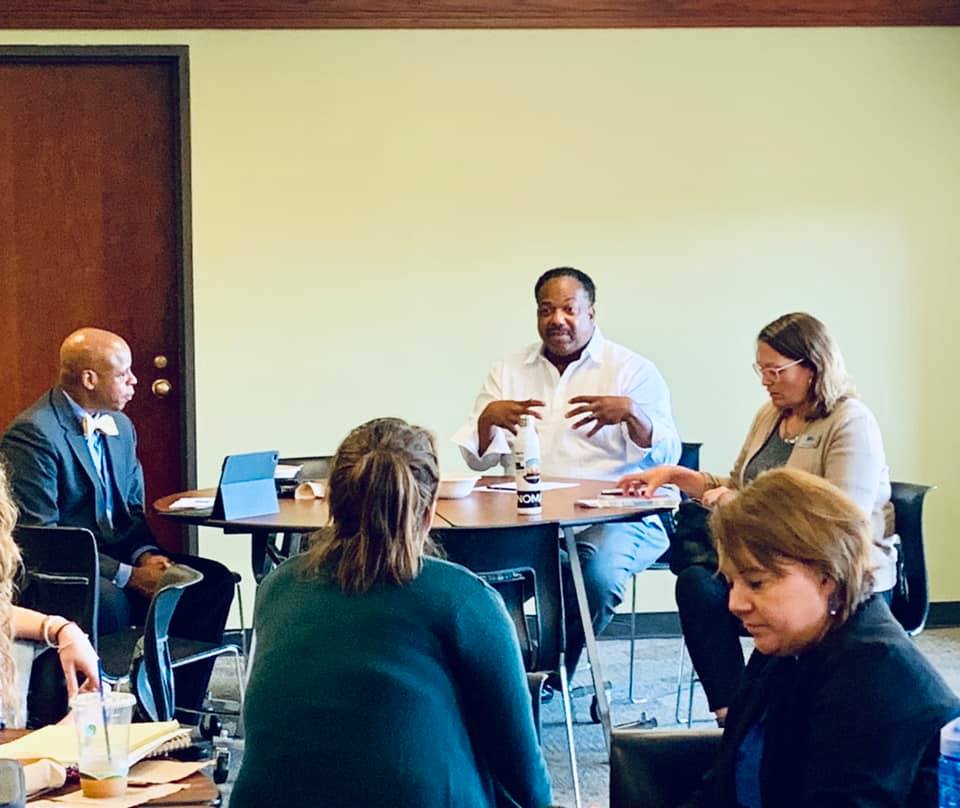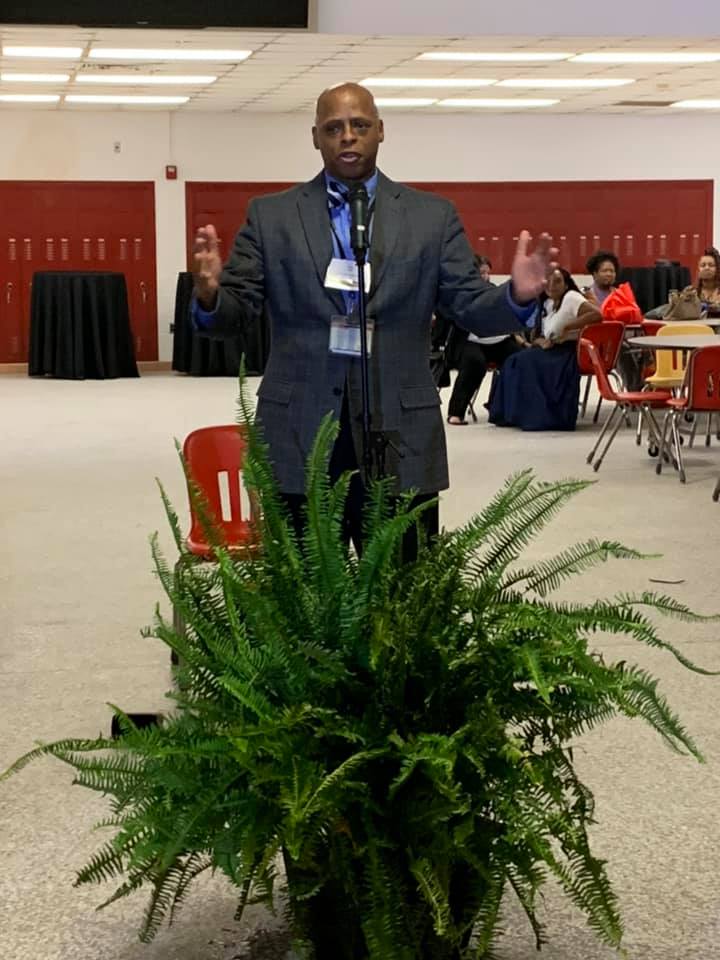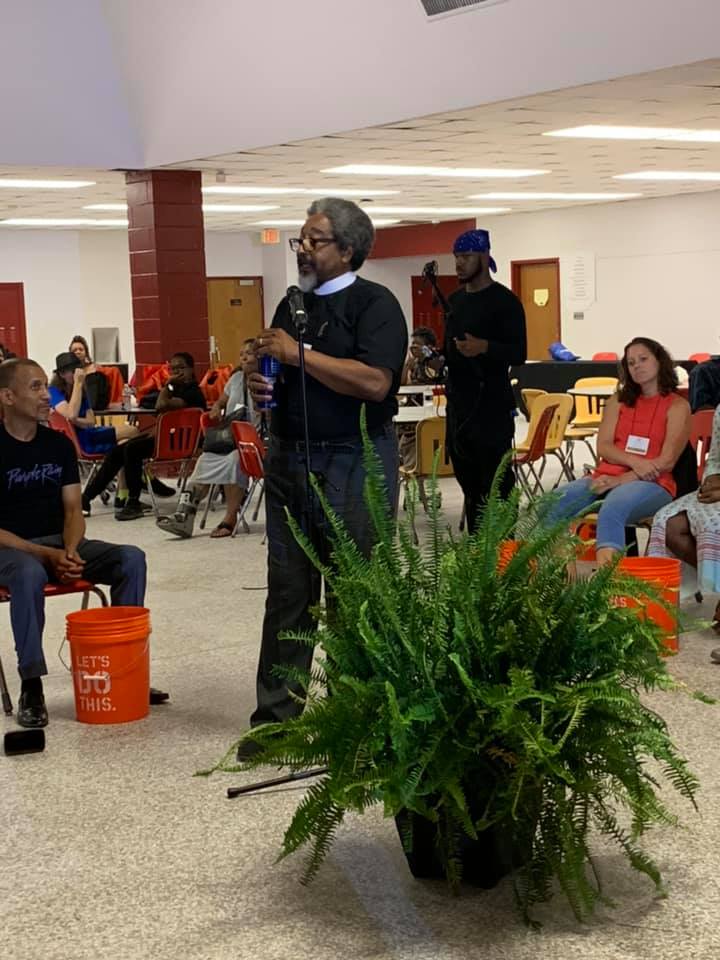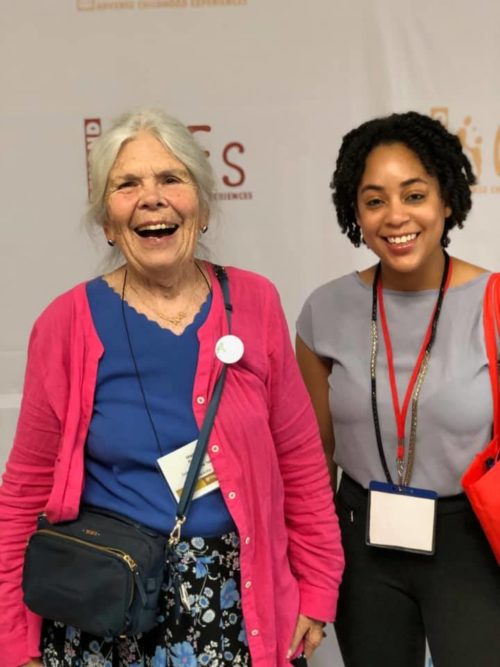The Beyond ACES: Impact of Race, Culture, and Poverty Summit was led by the Virginia Department of Health’s Crater Health District (CHD) with support from many partners, including those involved in the Southside Trauma-Informed Community Network (STICN). The Impact of Race, Culture, & Poverty Summit was held in August 2019 (view the speakers here). Brian Little with CHD, serves as the Special Projects Manager for Trauma Informed Care & Resilience and serves as the STICN convener. CHD’s goal is to create community wholeness by fostering a sense of authentic community resilience through trauma recovery. The STICN, which is supported by CHD, aims to implement CHD’s goal in shepherding the community through traumatic experiences. Community shepherds are represented by different sectors to meet people in spaces and places that resonate with their needs.
Norman Oliver, MD, VDH, at the Beyond ACES Summit shared, “The issue of trauma is something all of us experience. I think, communities of color, particularly, experience it far more than others. We have to address those adverse experiences that people have in childhood, particularly in terms of racial discrimination. However, it’s not just about the individual, it’s about the conditions in which people live and how those conditions have an impact on their lives.” For people of color, discrimination is an every day trauma that is lived and gone through.
The STICN often discusses the intersection between adverse childhood experiences, race, culture, poverty, and trauma. For the Southside, these experiences are community-wide as adversity is collectively shared by the Black and brown communities that populate the region. Yet, even in the midst of yet another collective trauma that disproportionately impacts Black and brown communities, many people are still in denial that racism even exist. Dr. Camara Jones, a keynote speaker at the #MovingBeyondACES Summit added, “I have the credentials to be credible and to be invited places, and I have the stories that can make anybody understand. I’m doing the work, because it’s important for all of us to name racism…and because I can get in places and do it.”
Network leader, brian.little@vdh.virginia.gov" rel="noopener noreferrer" target="_blank">Brian Little, believes the STICN is now witnessing how race relates to the pandemic. He believes the STICN has a new role to play in rebuilding the community afterwards. Little shared his aspirations, “I’m hoping that the STICN and Crater Health District can continue to partner to bring these conversations into peoples homes to increase awareness. One thing we have done with the health department is a radio broadcast with Virginia State University, because we discovered that there are a lot of people who may not have access to the internet or technology who listen to radio.” Dr. Hart, Director of the Crater Health District, which serves as the backbone organization of the STICN will lead the upcoming radio conversations. With many sectors of the community represented, the STICN is engaging in tough but imperative conversations on how every aspect of trauma, including cultural and historical trauma, impact their community.
Jonathan Wilson Hartgrove, Director of the School for Conversion added yet another perspective to how racism appears in communities when addressing the concept of White Slaveholder Religion, “I understand it is the way that we have inherited a theology that justifies a system that was set up to exploit Black labor, and that system has morphed and changed over the years, but it is the root of the inequality that we see in our society today, including health inequities. For some people, that means they feel a moral duty to uphold the system. For others, who are often on the receiving end, religion becomes a way of controlling and internalizing a sense of guilt and shame about the challenges faced. I try to expose the lies of slaveholder religion but also recover faith as a source of resilience in knowing that we have the power to change these systems.”
While many communities cope with the perpetuation of racism through internalized racism, it is important to note that these communities are not defined by structural racism. They do not need heroes. They do not need saving or supervision. Black and brown communities have been managing on their own. In fact, for the Black community, over 400 years of cultural resilience have contributed to the survival of slavery, Jim Crow, vagrancy laws, modern lynching, and more. Often times, for these communities, Father Willis Foster, Director of St. Stephens Church shares, “The solutions are in the community; most things are addressed in the community or by individuals or group of individuals.”
Organizations like the United Way of Greater Richmond and Petersburg, Crater Health District, St. Stephens Episcopal Church, VA Housing Alliance, Petersburg Public Schools, and others who are members of the STICN, have stepped up to the plate during this time. However, even with a STICN filled with passion and community resilience, this doesn’t change the way in which people see the Southside of Virginia. Some people respond to the needs of the community with more racism, even though the disparities are perpetuated by racism itself and not the community.
There is much more room for tough conversations to be held around this topic. For the STICN, there are safe places for conversations to occur through organizations like Coming to the Table. When asked how these conversations are held without offending people, the co-founder, Martha Rollins responded, “I think it’s okay to offend people enough to keep the conversation going and asking, “Do you know what the IT is that you are asking people to get over, so you do it with love and a smile and courage. If I were to get the audience of political leadership, I would invite them to the table and engage them in self-discovery.” People are coming together with a passion for racial justice in order to heal the legacies of enslavement. Martha adds, “These are the kind of people that can be change makers, change thoughts, and pierce the white bubbles of white superiority. They can help folks connect. That’s what makes it special.”
For the STICN, this new normal still fills the community with hope. Leanne Lytle with the United Way of Greater Richmond and Petersburg shared the positives that may stem from the pandemic, “My hope is that this is going to help us see what our relevance is as a network and what people want and need from the STICN outside of their individual perspective.” For Brian Little, he concluded, “Where we land, no one really knows, but hopefully, we will be able to be stronger, more resilient, and move in a direction that is more impactful to the future of our region.” The STICN fills the community with hopes and dreams that will far supersede the pandemic. During these times, the network is still hosting their monthly STICN meetings and community check-ins.
On May 5th, they held their COVID-19 Community Conversation update.
On May 7th, their monthly meeting was led by Amanda Lynch with GRSCAN, who engaged the community in mindfulness and meditation.
“We’re living through the impact of race, culture, and poverty and what we learned from the summit,” said Brian Little. The STICN isn’t defined by the constraints of the racism that impacts their community; instead, the community will tell their own story of resilience. The concluding theme of the #MovingBeyondACES Summit was H.O.P.E.
The STICN and the community are Healing Our People Everyday.
We are #TraumaInformedVA this #ResilienceWeekVA
Visit Vakids.org to learn more about the Campaign for a Trauma-Informed Virginia!







Comments (0)